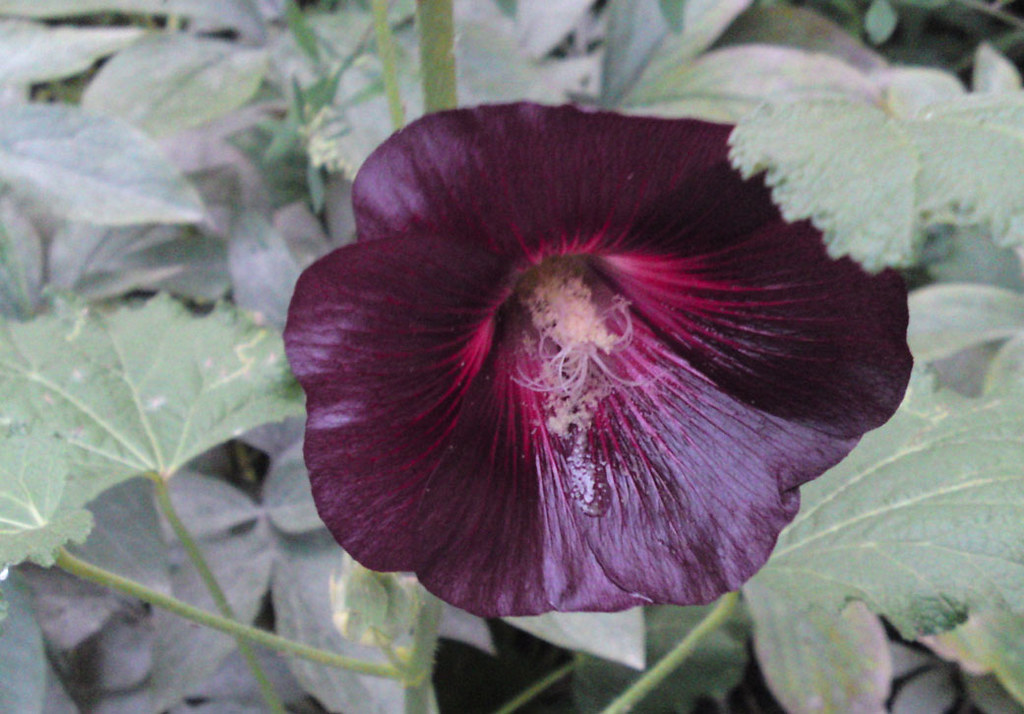This is no where near my best flower shot... but instead is probably the best shot I took with my phone... before it slipped out of my hand and hit the ground really hard. Ever since hitting the ground, my cellphone has been sketchtastic and shuts off at the slightest bit of a medium shake or jarring. Suffice to say, I'm not happy cause it was the first time I dropped my cell and meanwhile, I know iphone users who have dropped their phone 99times before the screen cracked [the 100th drop does it in]
The LG KC910 which has a Schneider-Kreuznach lens, has a sensor that yields 8.2mpx.

The amount of mpx is moot of course, because, it's inability to capture basic images without heavy tweaking is rather, scary. How LG thought slapping this poor example of a phone together being a good idea, is beyond me.
Good glass is good to have, but means nothing when the sensor is crap! What I find extremely annoying about this phone is that LG was smart enough to allow auto and manual focusing, but they didn't include aperture control... or at least, include a simulated version.
There are ISO settings, and the phone has exposure bias, but the flash is overpowered and the exposure bias goes between -1.0 and +2.0 (yeah, i don't get that either)
Suffice to say, I'm probably going to give in and get an iPhone, which means going on a contract with my service provider, which is something I've wanted to avoid for a while now. I suppose it's my best bet right now because I need a phone that doesn't die on me when it's martini'd.
I'd like to also point out that this is my 3rd LG phone. And suffice to say, I am not at all impressed and I will likely not be buying LG ever again. Their stuff is utter crap, easily disquised with shiny plastic. F*** YOU LG!!
Back on topic -
MEGAPIXELS.
Megapixels don't matter if the following conditions are low-grade: sensor and glass.
There... I said it. Now stop buying f***ing crap cameras and taking photos of yourself in mirrors. You can easily get a camera that has high megapixels but a low-grade sensor and worse glass and take pictures, but they won't be good.
Sensor -- Many companies make cameras. Few make good cameras.
To put things into perspective, Canon, Nikon, Sony, Samsung, et al., all put their best sensors into their DSLR cameras. But they also do trickle down... that is, after a sensor has proven itself in the latest release, chances are that it will get put into a lesser model is high - albeit with tweaking for price-point and cost-effectiveness. Having said that, Canon does this with their line-up to an extent. The 1D series gets best, then comes 5D, then 7D, then xxD (50/60d). Eventually, the Rebel line gets the tech from its bigger brothers. After that, the G-series... then finally the A-series. [Okay, yes... I know that's a rather glib way of stating it and that's not how it really works, but it might as well be the way it does.]
At the very least, any image taken with the latest A-series, is likely to be just as good as any shot taken with an older Rebel series camera.
Now... Glass...
Here's the fun part. The more you pay, the better it is. E.g. Canon's L-series line-up.
There are weird little discrepancies in this rule of thumb, and the biggest one is the well-known problem with the 70-200 F4L and the 70-300 IS. The 70-200 F4L is my telephoto option of choice. It's a great lens and it cost me at the time $700cdn (after exchange and taxes). The 70-300 IS lens on the other hand, would have cost me $750+ if i had bought it in either Canada or the US.
So, why did I go with the 70-200? Well, the extra 100mm wasn't important to me, and to get IS meant getting a variable aperture. With the 70-200, I get constant F4, which is good for DOF effects when at 200mm - not that I really have done shots with that combination, but i can! At 200mm on the 70-300, would have me at an aperture of probably 5.0. Not only that, the glass in the 70-300 isn't as good and that lens is a bit heavier. It really doesn't make any sense to get the 70-300IS when you know these details. I prefer a light-weight system. It makes my shoulders happy.
Now, there is a small oddity in the Canon world, when it comes to great glass. It's the 50mm 1.8... also known as the nifty-fifty or plastic-fantastic. For reasons similar to the Helios 44, the 50mm contains gaussian optics and renders really nice background blur. The 50mm 1.4 is a great lens too, but at 4x the price, few amateurs can justify it. The 50mm 1.2L on the other hand, is closer to 15x the price, and while worth every penny, is not easily justified by anyone not shooting professionally. Even still... from what I gather, most pro's go for the 35mm or the 85mm. (L-series in each case)
Fast lenses rock... that's why they're so damn expensive. ;)
I'm rambling... I'm done.






0 comments:
Post a Comment